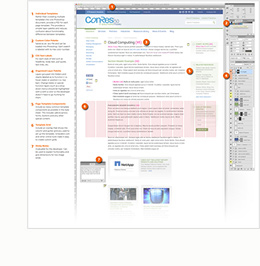Perhaps because they are so excited to start the “real work” of designing, many agencies tend to rush through the information architecture planning stage. The truth is that a site’s information architecture is more important than design, content, programming, measurement, calls to action, or anything else. Of course, any good site requires all of those things, but without a perfect information architecture, none of those things will have the structure they need to be effective, and the site will be a house of cards.
A Walk in the Woods
Say it’s a beautiful Sunday afternoon in the fall and you decide to go for a walk in the woods. Let’s agree that you could have two basic types of walks: one successful and one not. On the successful walk, you start at the trailhead, make your way onto the trail and meander along, stopping here and there to enjoy the nature around you. Eventually, you follow the trail markers back to the trailhead. The walk has concluded and your body and mind are all the better for it.
What if halfway through the walk you realize you haven’t seen a trail marker in a little too long? Within moments, your heart and mind switch into survival mode, and before you know it your pleasant walk is definitely over. Your only care is to get out of these weird spooky woods and back to your car right away.

Even with well marked trails, I had a pretty hard time hiking up Mt. Mitchell in 33 degree rainy weather this past January.
Your Home Page Isn’t Your Home Page
The same type of thing is true when we navigate websites. Because we spend so much time on search engines, we often find ourselves on some very low-level page far, far away from that homepage everyone so carefully considered when the site was being built.
Because of our search-based culture, you really have to consider every page of the site to be the home page. You have to ask yourself, what would I think of this site if I landed, sight unseen, on the third page of the archived newsletter from February 2005? Would I have an intuitive sense of where I am in the greater context of the site? Would I know what the company does, and what other articles on the site I should read, all without leaving the current page?
If the site you are building passes this test, then its information architecture is functioning well. Most sites don’t pass this test, though. They fail because agencies and web developers do funny things like rush through the information architecture stage to get started on the design. Discovering a site’s perfect information architecture is essential and isn’t that hard if you create the right conditions for it.

